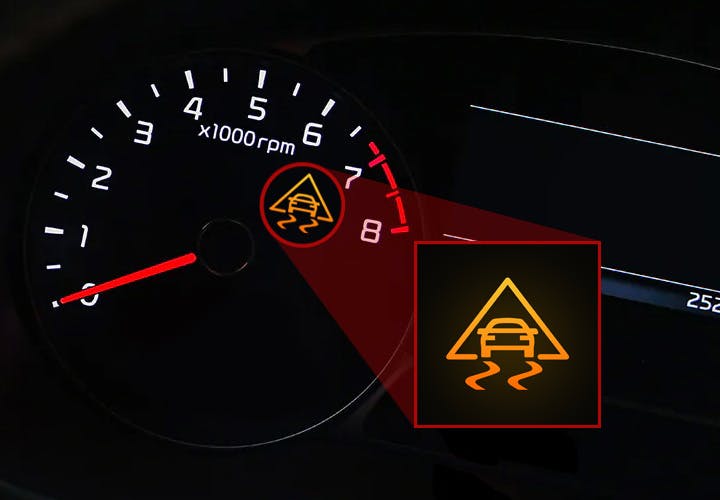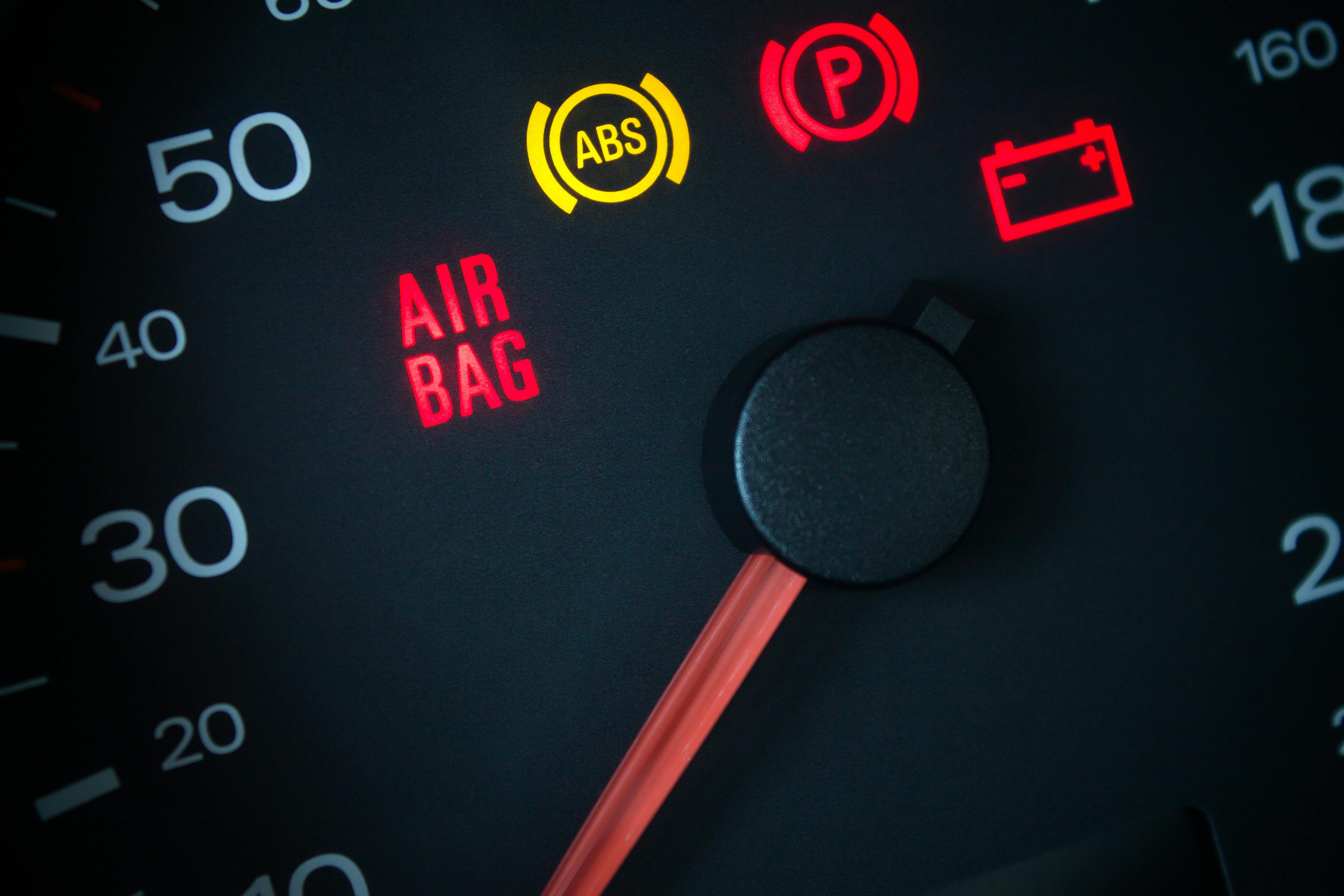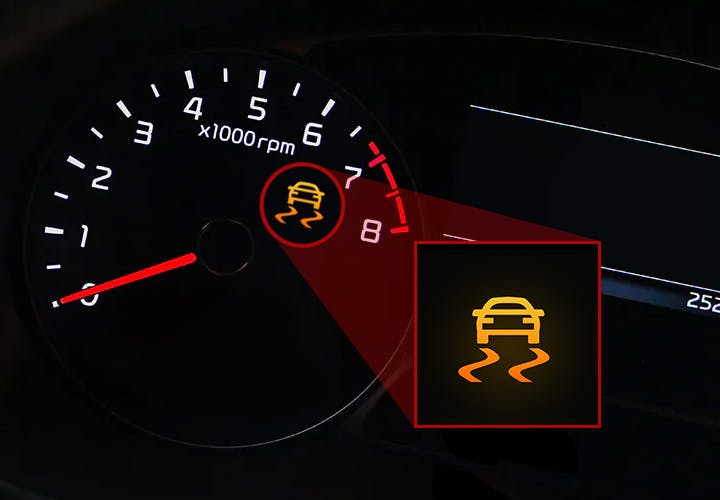Electronic Stability Program (ESP): How does it work?

The Electronic Stability Program, or ESP in short, refers to an electronic stabilization system that aims to increase driving safety. It is one of the first and, at the same time, the most widely used electronic stabilization systems.
This system continuously monitors a car's movements and can detect loss of traction or unwanted change in direction. If such an event occurs, ESP automatically intervenes and stabilizes the vehicle through controlled interventions on the brakes, steering, engine, and gearbox.
Spis treści
Introduction
The ESP also uses electronic assistants like the ABS or ASR system. Thanks to an electronic stabilization system such as ESP, it is possible to use the full potential of the car's driving characteristics.

ABS System: How it works and what it is for?
Statistics also show that ESP increases active safety, thereby reducing traffic accidents. If all vehicles were equipped with ESP, approximately 1/10 of accidents could be avoided.
BOSCH and Mercedes-Benz developed the electronic stability program to increase the safety of driving in a car, which they succeeded in doing. ESP serves as an element of the vehicle's active safety because it overcomes the driver's ability to manage critical situations, which is why this electronic system belongs to the mandatory equipment of the car today.
ESP Function
The Electronic Stabilization System (ESP) helps the driver to manage critical driving situations when the vehicle could skid. The control unit compares the data on the actual state of the driving direction with the data on the driver's chosen driving direction.
Data about the direction chosen by the driver and the actual direction of travel are obtained by the ESP system from various sensors, such as:
steering wheel rotation
wheel speed
brake fluid pressure
gas pedal position
longitudinal and lateral acceleration
ESP Components
An ESP system comprises several interconnected parts, each playing a crucial role in detecting and correcting vehicle instability. Key components include:
Sensors
ESP systems utilize multiple sensors to monitor a vehicle's movements and conditions continuously:
Wheel speed sensors: Measure the speed of each wheel to detect if any wheel is slipping or losing traction.
Steering angle sensor: Monitors the driver's steering input to determine the intended direction of the vehicle.
Yaw rate sensor: Measures the vehicle's rotation around its vertical axis, indicating whether it is turning.
Lateral acceleration sensor: Monitors the vehicle's sideways movement to detect potential skidding.
Electronic Control Unit (ECU)
The ECU is the brain of the ESP system, processing the data from the sensors to determine if the vehicle is at risk of losing control. The ECU intervenes by adjusting the vehicle's braking and engine power if a potential instability is detected.
Braking and Engine Control
The ECU communicates with the vehicle's braking and engine systems to apply the necessary corrections, such as:
Individual wheel braking: The ECU can apply braking force to one or more wheels to correct understeer or oversteer.
Engine torque control: The ECU can reduce engine power to limit wheel spin and help the vehicle regain traction.
How does the ESP work?
Thanks to the steering wheel rotation sensor, brake fluid pressure, and gas pedal position, the ESP detects where the driver is heading the car or where the steering wheel is pointed. The ESP detects the vehicle's actual direction thanks to the remaining sensors.
If the data do not match, the control unit of the ESP system will evaluate it as a skid, and the car will automatically stabilize and compensate for the incipient skid. After ESP detects a loss of traction, it automatically brakes the car's left/right rear or left/right front wheels individually.
This happens not only when braking but also when accelerating and going through a corner, which the ESP keeps the vehicle from skidding. Thanks to ESP, the car is, therefore, more stable and controllable.
ESP warning light - is there a problem?

Despite the orange color, the ESP warning light may not signal a problem with the electronic stabilization system. Some electronic stabilization systems even intervene in the steering and speed of the car and, if necessary, adjust the engine power or turn the wheels of the vehicle in the desired direction.
If the system interferes with the steering, the ESP warning light flashes. This is not an issue. Quite the opposite - the electronic stability program is active. If this dashboard symbol flashes, you probably got into a difficult driving situation, and the ESP system intervened and stabilized the vehicle.

ESP Warning Light: What does it mean, and why is it lit?
In certain cases, this light may flash and then stay on. In this case, the system intervenes in the steering to prevent the vehicle from skidding. If the system is working properly, the warning light will go out as soon as the car stabilizes.
However, if the ESP warning light stays on even under normal conditions, it is probably a problem with the electronic stability system.
What is the difference between ESP and ESC?
ESP, which stands for Electronic Stability Program, is the same system as ESC - Electronic Stability Control. There is no difference between ESP and ESC, but the name. This is due to the fact that various car manufacturers use different names for certain features.

ESC system: How does the electronic stability control system work?
Electronic Stability System Markings
Car manufacturers use different abbreviations when labeling the electronic stability system, but the principle of operation of these systems is the same. In the case of this system, you may encounter the following labels:
ESC (Electronic Stability Control) - general name for electronic stabilization system, but used by Škoda, Fiat, Hyundai, Tesla, Luxgen, and Proton
ESP (Electronic Stability Program) - designation used by Audi, Chrysler, Dodge, Hyundai, Jeep, Kia, Mercedes-Benz, Saab, Suzuki, Lamborghini, and Smart
ESP (Electronic Stabilization Program) - the designation is used by Volkswagen (the abbreviation is the same as the previous one, the minor difference is only in the full name)
VDC (Vehicle Dynamic Control) - designation used by Subaru, Nissan, and Infiniti
DSC (Dynamic Stability Control) - designation used by Aston Martin, BMW, Jaguar, Land Rover, Mazda, and Mini
VSA (Vehicle Stability Assist) - designation used by Acura and Honda
VSC (Vehicle Stability Control) - the designation used by Lexus and Toyota
VDIM (Vehicle Dynamics Integrated Management) - the designation used by Lexus and Toyota
ASC (Active Stability Control) - the designation used by Jaguar and Mitsubishi
DSTC (Dynamic Stability and Traction Control) - designation used by Volvo
PSM (Porsche Stability Management) - the designation, as the name implies, is used by Porsche
M-ASTC (Mitsubishi Active Skid and Traction Control) - the designation used by Mitsubishi
StabiliTrak - designation used by Buick, Cadillac, Chevrolet (most models), GMC, Pontiac, Saturn, Isuzu, and Hummer
AdvanceTrac - designation used by Ford, Lincoln, and Mercury
Active Handling - designation used by Chevrolet (Corvette)
Some manufacturers use multiple designations, as the designation may not apply to the entire brand but to a specific model.
Conclusion
An electronic stability program is crucial in enhancing the car's stability, driving safety, and driver confidence. According to the statistics and estimates, this system prevents many road fatalities and injuries.
As of 2012, the NHTSA requires all new passenger cars sold in the US to be equipped with an electronic stability program. Conversely, according to the European Commission, all new passenger cars must have an electronic stability program in the EU.